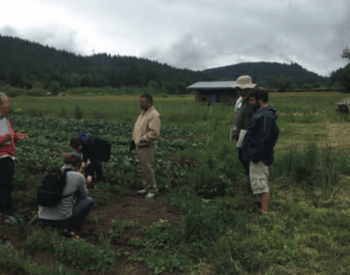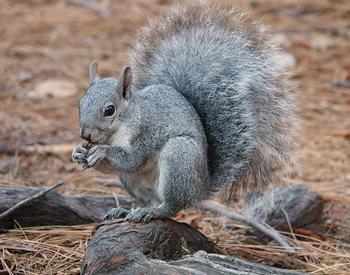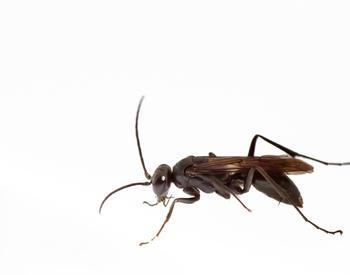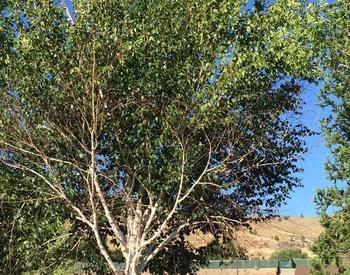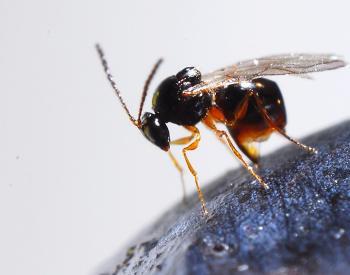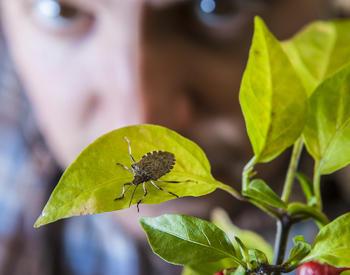The small stonecrop mason bee (Hoplitis emarginata) had only been seen in the wild by a single person — a young Dr. Terry Griswold, who is currently a research entomologist at the US Department of Agriculture's Bee Lab in Logan, Utah. He never saw a lot of these bees, only recording it from four specimens, all from Northern California. Moreover, Griswold had last seen the bee on June 26, 1979.
Fast-forward 40 years to 2019. OSU Extension Master Melittologist Judi Maxwell (Grants Pass) discovered the bee for the first time in Oregon and the first time anywhere in 40 years.
Maxwell noted that the bee was visiting inconspicuous cream-colored native stonecrop (Sedum sp.) plants growing among alpine rock in the Siskiyou Mountains in southern Oregon. Maxwell broke open the secret to finding this bee by discovering its fidelity to stonecrop plants. This discovery helped Master Melittologist Briana Lindh find the bees a month later at the foot of Mount Jefferson. The discovery of these bees so far north of where they were originally known, as well as the association with stonecrop plants, make these finds of high scientific value for the Oregon Bee Atlas.
Very little is known about these small bees (a little under one-third inch in length). They are solitary bees, which means a single female will leave her nest to collect pollen from stonecrop flowers to create a pollen ball on which she lays a single egg. The location of the nests of these bees remains a mystery and could range from excavated burrows in soil to cracks in alpine rocks. The nests are invariably plugged with some kind of material, although bees in this genus vary considerably in the type of material they use (ranging from leaf pulp, pebbles, masticated leaves, bits of wood, resin, clay, sand, and petals to create partitions between cells and nest plug).
The bee was first described in 1983 by Griswold as part of his revision of a subset (subgenus Proteriades) of Western U.S. mountain-dwelling small mason bees (genus Hoplitis).
This finding is one of many discoveries of high scientific value made by Oregon's Master Melittologist volunteers. Over the next decade, volunteers are hoping to build an atlas of Oregon bees that not only contains range maps for all the species in the state (estimated at 600–700 species), but lists the plants they prefer to gather pollen and nectar from. The Oregon Bee Atlas is a one-of-a-kind program in the U.S. that is led by volunteers working under the umbrella of OSU Extension. Since 2018, volunteers have contributed 100,000 new bee records from every county in the state. The atlas will help Oregonians make informed conservation decisions to ensure Oregon remains the best place for bees in the nation.
